Specification and Features
Like its predecessor, the E-M1 Mk II features the body-integral 5-axis image stabilization but improvements have resulted in a reduction in camera shake of up to 5.5 stops (up to 6.5 stops with certain Olympus optically-stabilized lenses), up from the already impressive 4 stops of the previous model. The sensor shifting feature can also be used to deliver a 50-MP equivalent JPEG combined from separate eight shots.
Enhancements have also been made to the camera’s AF system. The new camera features a hybrid Dual FAST AF system and combines contrast detection with 121 embedded cross-type, phase-detect points. Although the E-M1 Mk II shares a familiar body design with the original, it has larger grip and in turn a larger, higher capacity battery, with reportedly 440 shots between charges.
As you might expect from a pro-oriented model, the body is weather-sealed and features the same large 1.48x magnification, high-res (2.36m-dot) electronic viewfinder from the original model. At the rear the E-M1 Mk II has 3-in LCD fully articulating touchscreen. It also features dual SD memory card slots, though only slot 1 has support for the faster UHS II standard.
The original model was quite well-received for its video-capabilities and the Mk II expands on that with the ability to record both UHD at 24/25/30p and DCI 4K video clips at 24p (up to 237Mbps), and can also output 4:2:2 video via the HDMI port.
The E-M1 Mk II measures 5.3 x 3.6 x 2.7″ / 134.1 x 90.9 x 68.9 mm and weighs 1.26 lb / 574 g with battery and memory card
It is available now at price of around $1999 (USD) body only, around $900 over the original M1.
Measurements: Best performing Four Thirds format sensor
With an DxO Mark score of 80 points the new E-M1 Mk II has the best performing Four Thirds sensor in our database. It’s ahead of the previous best used in the high-end Lumix DMC-GX8 from consortium partner Panasonic by five points. Olympus claim it’s a newly developed sensor and with lower noise, and both wider dynamic range and improved color discrimination at all ISOs it is one of the most significant upswings in performance we’ve seen in this format.
Olympus OM-D E-M1 Mark II vs Olympus PEN-F vs Olympus OM-D E-M1
As the new flagship model in the range, the E-M1 Mk II sports a newly designed 20.4-MP sensor, but it’s not the first Olympus to be kitted out with one. The recent PEN-F sports a similar 20.3-MP resolution sensor, while the original E-M1 has a 16-MP unit that was widely used by the company in older models like the OM-D E-M5 and PEN E-P5.
Noise levels from the new sensor are slightly lower throughout the ISO range compared with both the 20.3-MP and earlier 16-MP sensor though most of the gains are seen at and around base ISO. Dynamic range – that all-important arbiter of sensor performance – is 0.4EV above the PEN-F sensor at base but it’s practically identical from ISO 800 onwards. Against the original E-M1 it’s the opposite. The Mark II is better from ISO 800 onwards, but pretty much the equivalent at low ISO.
Color discrimination at base is impressive on the new E-M1 Mk II but that’s mostly due to the lower measured ISO, and it falls between the two at higher ISOs. Nevertheless, the higher SNR means around a +0.5 stop improvement over the PEN-F and E-M1 in our low-light (Sports) test.
Olympus OM-D E-M1 Mark II vs Nikon D500 vs Nikon D750
At around $2,000, the new E-M1 Mk II is competing against some very capable cameras that have physically larger sensors. Targeting a similar audience, the APS-C 20-MP Nikon D500 is the same price while the 24-MP Sony A6500 is considerably cheaper at $1400 and it has the slightly better performing sensor of the two. However, at around $2,300 at launch (and at around $2,000 now), you could pick-up a full-frame 24-MP Nikon D750. It is designed to appeal to a different market, but it’s a very-capable camera.
Even though the E-M1 Mk II has a 12-bit processing pipeline and the two Nikons’ both 14-bit, the E-M1 Mk II sensor practically on a par with the D500 sensor in both color discrimination and noise levels throughout the ISO range. Nevertheless, the Nikon D500 sensor produced some very strong DR results, particularly at ISOs above 400, and save for ISO 200 it is around a stop (+1 EV) wider at most ISOs.
While the E-M1 Mk II sensor proved to be competitive in some aspects with the APS-C sensor in the D500, against the full-frame Nikon D750 it is unsurprisingly, still some way behind. From base to ISO400 the Nikon D750 sensor has only slightly wider DR than the D500, but that equates to a solid 1.5 stops at base over the E-M1 Mk II. Moreover, the full-frame sensor has far better color discrimination and lower noise than either: in our low light ISO test, there’s an improvement of around +1.25 EV over the E-M1 Mk II and D500.
Conclusion
Although consortium partner Panasonic has since announced the video-centric Lumix DMC-GH5 at the same price point, at around $2,000, the Olympus OM-D E-M1 Mk II seems at odds with the previously competitive pricing of the Four Thirds models. All the same, the E-M1 Mk II remains one of the most intriguing and appealing cameras announced in recent months, while the sensor itself sets a new standard for that format.


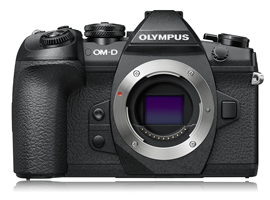



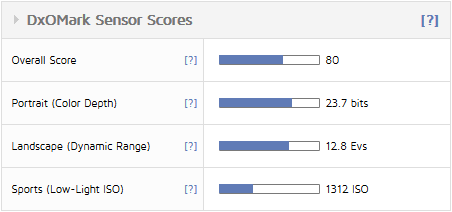
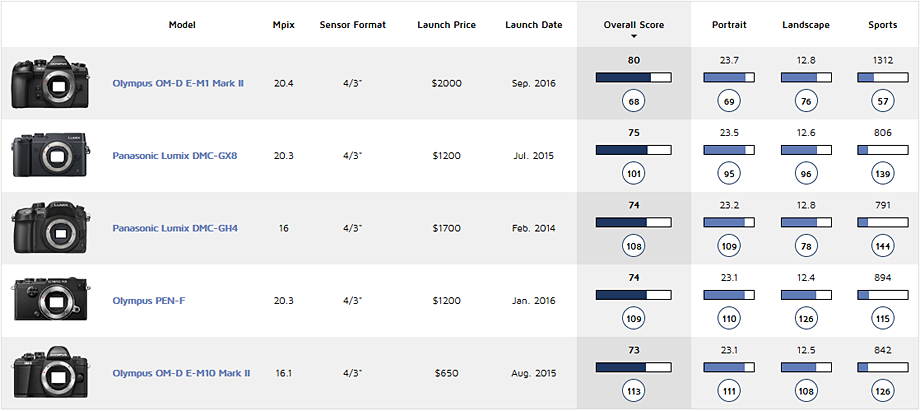
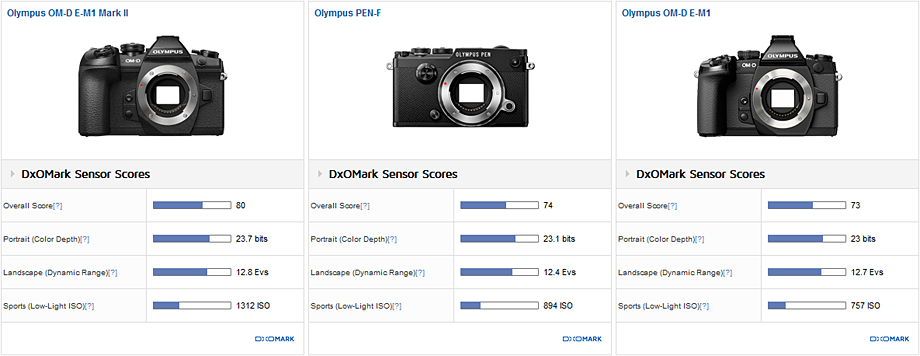
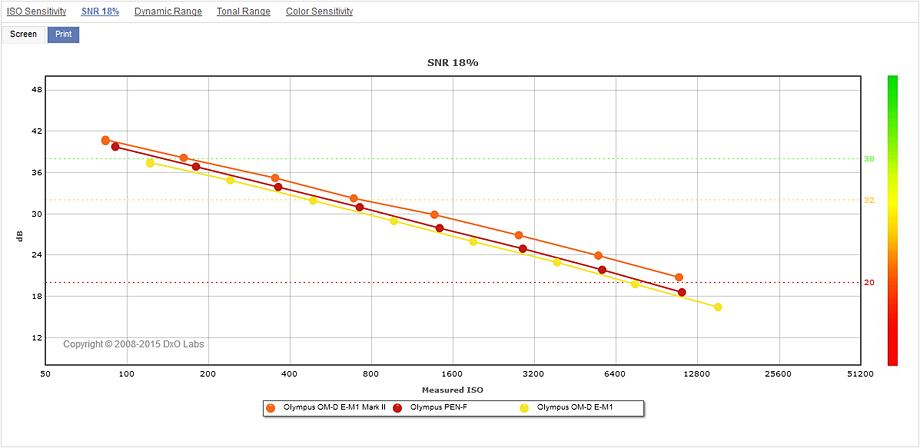
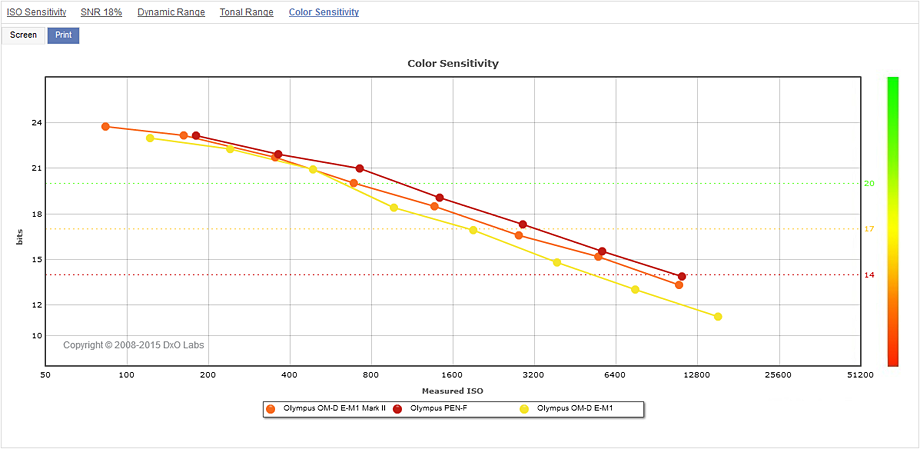
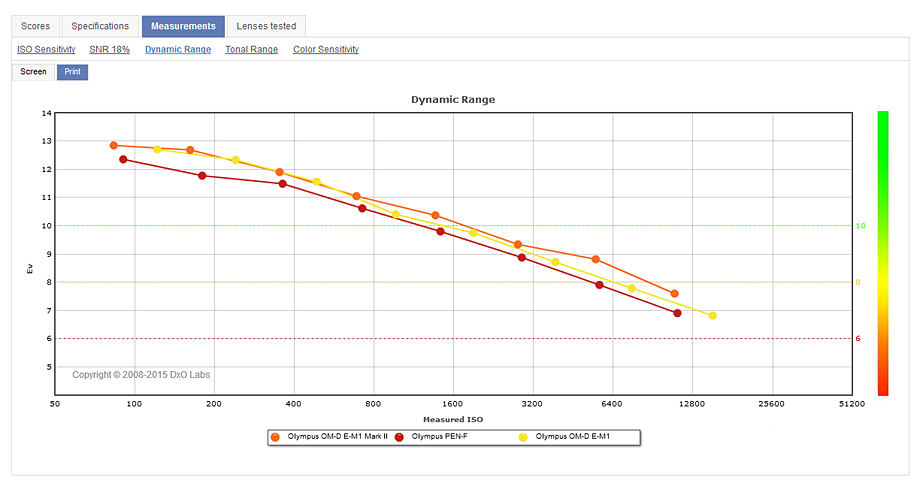
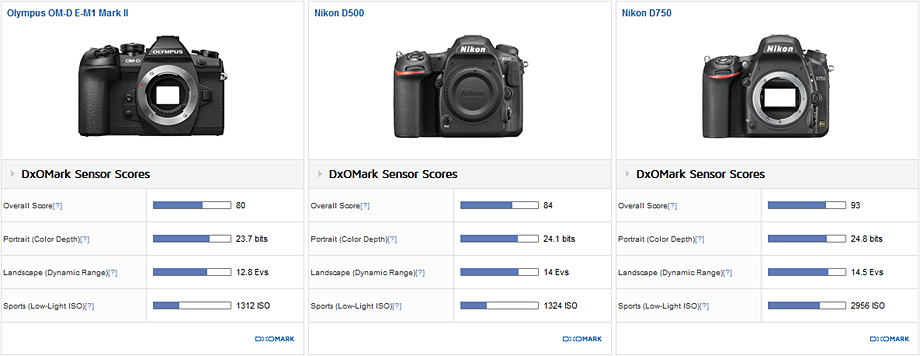
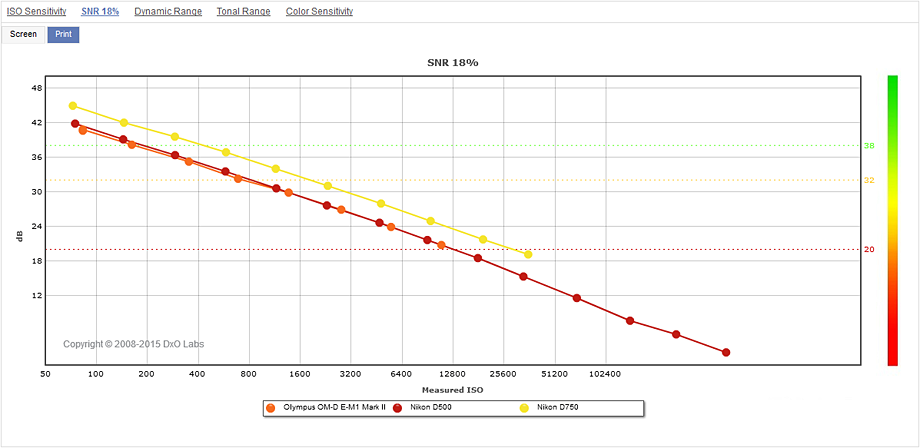
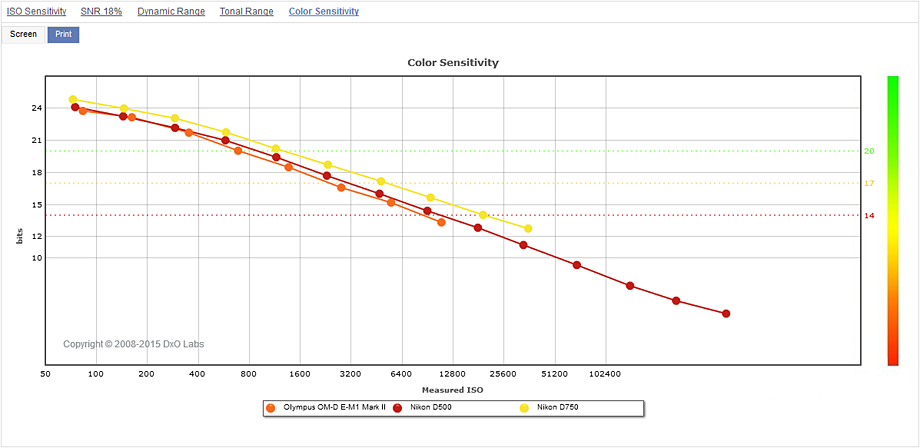
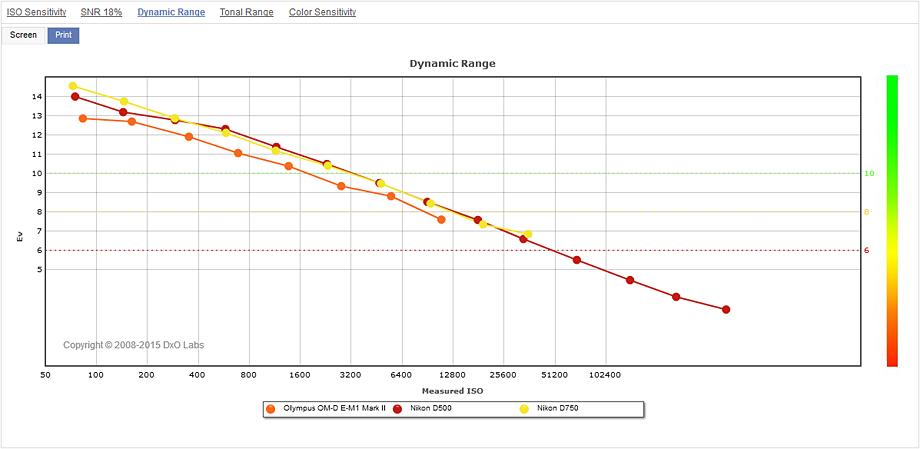
DXOMARK encourages its readers to share comments on the articles. To read or post comments, Disqus cookies are required. Change your Cookies Preferences and read more about our Comment Policy.